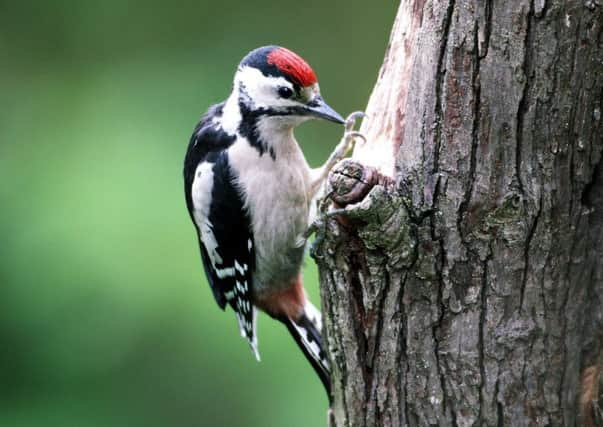Country Diary: Handsome bird loves the fat balls


One of the first deciduous shrubs to wake from winter’s sleep is the hazel. From the hazel’s bare leafless twigs, already dangle the yellow male catkins in twos and threes. Many are laden with pollen and wiggle in the breeze like tassels we all call lambs’ tails. The tiny female flowers appear later near the tips of twigs. They’re minute, red starry flowers that will be pollinated, fertilised, and form hazel nuts.
In the 13th century, a Franciscan friar named Roger Bacon, used hazel wood to make gunpowder, and the tree then became endowed with supposed supernatural powers.
Advertisement
Hide AdAdvertisement
Hide AdMichael’s siting of new bird-feeders beside the car park at the far end of Seamer Road Mere, has now been greatly appreciated by our feathered friends. A variety of tits, robin and blackbird are now regular visitors. The greater-spotted woodpecker flew by and we noted its large conspicuous white ‘shoulder’ patches as it vanished into nearby conifers. It soon returned and attacked the fat balls, where we were able to admire the handsome bird at close quarters.
It’s the larger of the two black and white woodpeckers, and is roughly starling-size. Adults and immature birds of both sexes have bright red under-tail coverts.
This is Britain’s most widespread woodpecker found anywhere in a tree, and it usually becomes a regular visitor where food is available.
Most of its food is obtained by pecking at dead and decaying wood to extract insects and grubs. Any crevices and decayed areas of wood are attacked with rapid blows of the beak.
Advertisement
Hide AdAdvertisement
Hide AdThe Forge Valley feeding station was equally rewarding, with a host of tit varieties, nuthatch; robin; blackbird; many more chaffinches, great spotted woodpecker and pheasant. How they have all appreciated peanuts; sunflower seeds and corn, along with the ever-popular meat balls!
Now although I understand greenfinches are attracted to bird-tables with sunflower seeds, we have seen very few at all over the last decade or so.
One finch however, has recently attracted much attention – the hawfinch. Apparently, despite its shy and secretive behaviour, a flock of about 100 has been recorded in the arboretum at Castle Howard!
The hawfinch has a massive bill and short tail in silhouette, but obtaining good views is not an easy task when these birds perch on the very top-most branches of trees. Look out for them, and you may be lucky!